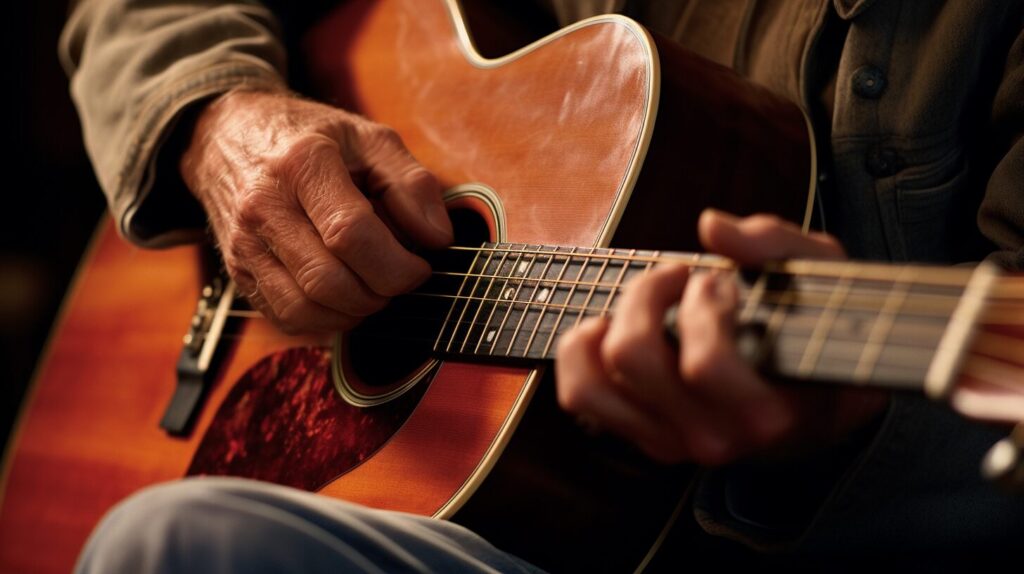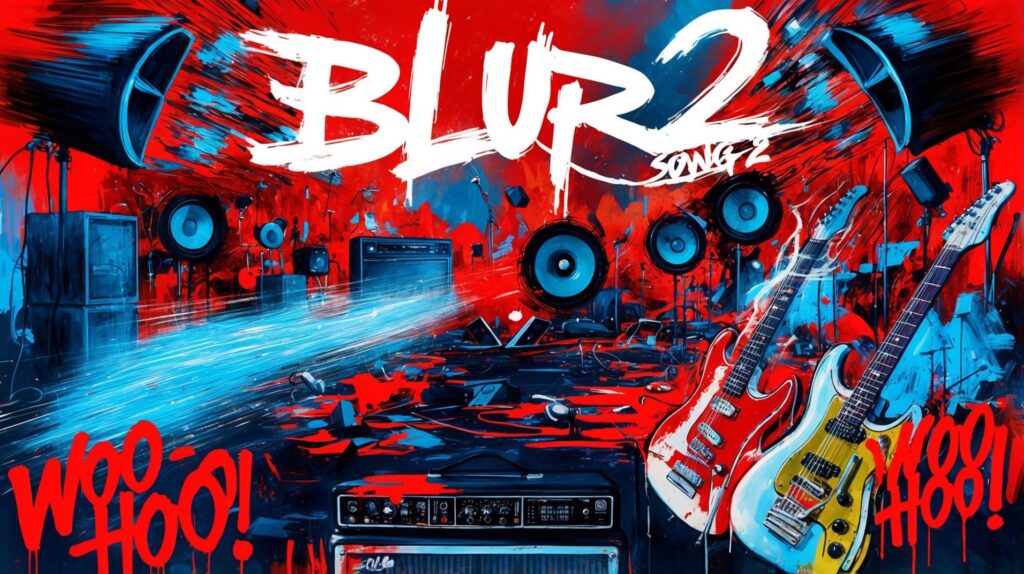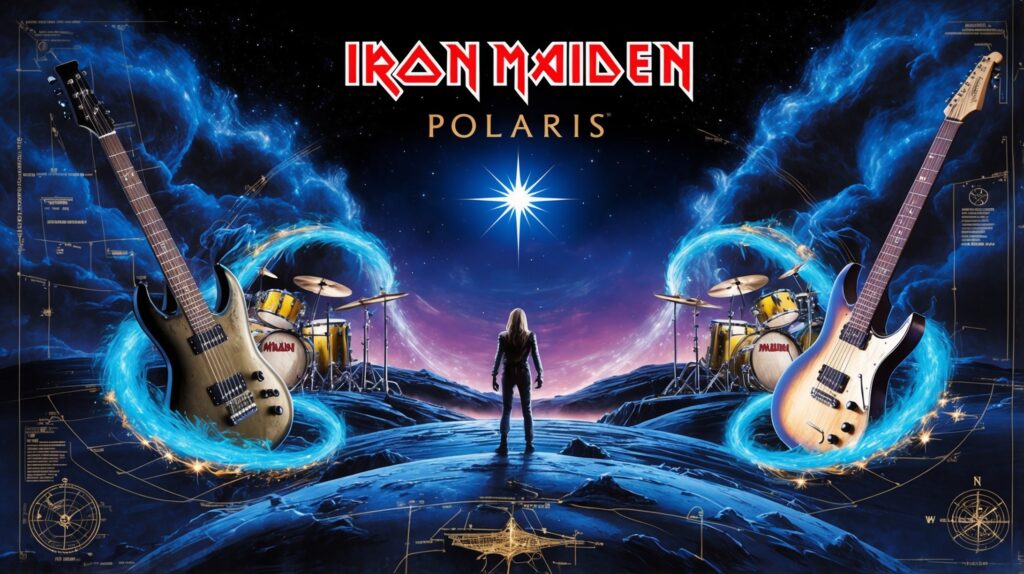Embark on an acoustic journey with Eric Clapton’s “Signe,” a serene instrumental that opens the legendary “Unplugged” album with a delicate, yet profound, touch. This piece, devoid of lyrics, relies solely on the tender strokes of Clapton’s guitar to convey a spectrum of emotions, from nostalgia to a subtle, introspective joy. “Signe” stands as a testament to Clapton’s virtuosity and his ability to express profound sentiments without uttering a single word.
In this exploration of “Signe,” we’ll delve into the intricacies that make this instrumental piece a standout in Clapton’s oeuvre. From the composition’s backstory to its impact on the “Unplugged” album and Clapton’s legacy, we’ll uncover the layers of this seemingly simple yet emotionally charged melody. Join us as we dissect the chord progressions, the influence of “Signe” on acoustic guitar music, and its place in the tapestry of Eric Clapton’s storied career.
Whether you’re a long-time Clapton aficionado or new to his acoustic explorations, “Signe” offers a gentle yet compelling entry point into the depth of his musical genius.
Eric Clapton: The Mastermind Behind “Signe
Eric Clapton’s “Signe” is a poignant instrumental masterpiece from the “Unplugged” album, showcasing his guitar mastery and the deep emotional resonance of his music.
 Eric Clapton, a name synonymous with guitar mastery and musical innovation, stands tall in the annals of rock and blues history. Born on March 30, 1945, in Ripley, Surrey, England, Clapton’s early life was marked by a complex family dynamic, which inadvertently shaped his emotional depth and artistic expression. With a career spanning over six decades, Clapton has traversed the musical landscape, leaving an indelible mark with his soul-stirring melodies and profound lyrics.
Eric Clapton, a name synonymous with guitar mastery and musical innovation, stands tall in the annals of rock and blues history. Born on March 30, 1945, in Ripley, Surrey, England, Clapton’s early life was marked by a complex family dynamic, which inadvertently shaped his emotional depth and artistic expression. With a career spanning over six decades, Clapton has traversed the musical landscape, leaving an indelible mark with his soul-stirring melodies and profound lyrics.
In the tapestry of Clapton’s illustrious career, “Signe” emerges as a poignant masterpiece, showcasing his finesse in acoustic guitar playing. Released in 1992 as part of the critically acclaimed “Unplugged” album, “Signe” is a testament to Clapton’s versatility and his ability to evoke profound emotions through instrumental music. This album not only solidified Clapton’s legacy but also resonated with fans worldwide, achieving monumental commercial success and earning a plethora of accolades, including six Grammy Awards.
The early ’90s marked a transformative period in Clapton’s career, with the release of the “Unplugged” album. This era was characterized by a return to the roots of music, with Clapton stripping down his sound to its bare essentials, thus allowing the raw emotion and technical prowess of his guitar work to shine through. “Signe,” with its intricate fingerpicking and melodic grace, stood out as a beacon of Clapton’s artistic rebirth during this period.
Throughout his career, Clapton has been known for his collaborative spirit, working with a myriad of artists across various genres. The “Unplugged” session was no exception, featuring contributions from notable musicians such as Andy Fairweather Low, Nathan East, and Steve Ferrone, among others. This collaborative environment fostered a creative synergy, enabling Clapton to explore new dimensions of his musicality and to deliver a performance that was both intimate and expansive.
Eric Clapton’s contribution to music extends beyond his solo works. As a member of iconic bands such as The Yardbirds, Cream, and Derek and the Dominos, Clapton’s influence permeates the fabric of rock and blues music. His guitar solos, characterized by their emotive intensity and technical brilliance, have inspired countless musicians and music enthusiasts alike. Clapton’s journey, marked by personal tragedies and triumphs, has imbued his music with a sense of authenticity and emotional depth that continues to resonate with audiences around the world.
“Signe” stands as a reflective piece in Clapton’s oeuvre, embodying the introspection and personal evolution that have defined his later years. This instrumental piece, devoid of lyrics, communicates through the language of melody and harmony, inviting listeners to embark on a journey of emotional exploration. It is in this quiet introspection that the true essence of Clapton’s artistry is revealed, showcasing his unparalleled ability to convey complex emotions through the strings of his guitar.
A Triumph in Unplugged Excellence
Exploring the awards and global recognition of Eric Clapton’s ‘Unplugged’ album, featuring the song ‘Signe,’ alongside its covers and cultural impact.
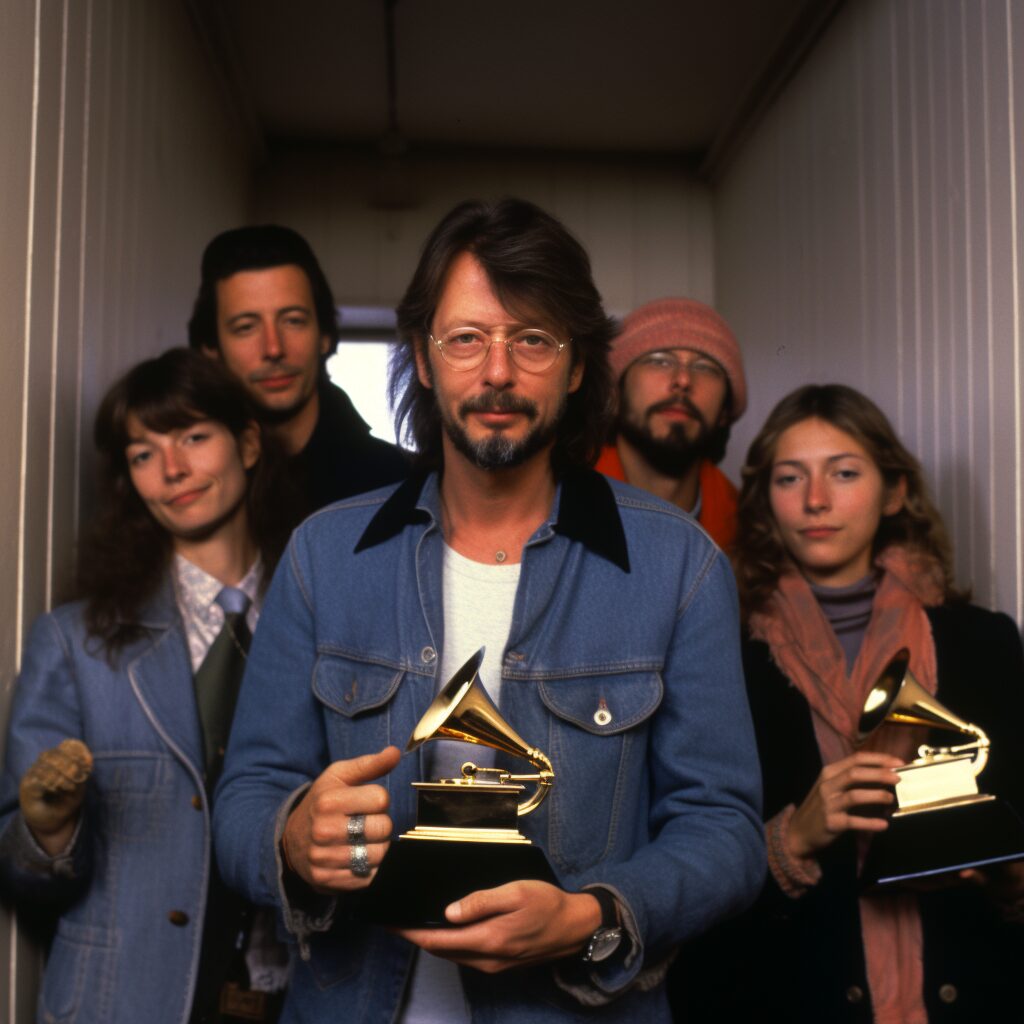 Eric Clapton’s “Unplugged” album, home to the acoustic gem “Signe,” is a testament to the legendary musician’s versatility and enduring appeal. This album, recorded live for MTV Unplugged in 1992, not only showcased Clapton’s masterful guitar work but also earned him an impressive array of awards, solidifying his status in the music world.
Eric Clapton’s “Unplugged” album, home to the acoustic gem “Signe,” is a testament to the legendary musician’s versatility and enduring appeal. This album, recorded live for MTV Unplugged in 1992, not only showcased Clapton’s masterful guitar work but also earned him an impressive array of awards, solidifying his status in the music world.
A Grammy Sweep
The “Unplugged” album, featuring “Signe” as its opening track, was a critical and commercial success, earning Clapton six Grammy Awards in 1993, including Album of the Year, Best Male Pop Vocal Performance for “Tears in Heaven,” and Best Male Rock Vocal Performance. The album’s heartfelt renditions and Clapton’s raw, emotional delivery resonated with audiences and critics alike, marking a significant moment in his illustrious career.
Echoes of Recognition
Beyond the Grammys, Clapton’s influence and contributions to music have been recognized globally. His work has garnered nominations and wins from various prestigious institutions, including the Echo Music Prize, where he was honored with accolades such as International Artist of the Year and Bestseller of the Year for his live performances and collaborations.
Covering a Classic
“Signe” has inspired musicians around the world, leading to numerous covers by artists eager to pay homage to Clapton’s acoustic brilliance. These renditions span various genres and interpretations, showcasing the song’s universal appeal and the wide-reaching impact of Clapton’s music.
In the Limelight
The song’s influence extends beyond the music industry, featuring in cultural moments and media, further cementing its place in the annals of music history. While specific accolades for “Signe” are intertwined with the acclaim of the “Unplugged” album as a whole, the song remains a standout piece for its melodic purity and emotional depth.
A Legacy of Musical Excellence
Eric Clapton’s journey, marked by critical acclaim and industry awards, reflects his profound impact on music. “Signe,” with its gentle melodies and intricate guitar work, encapsulates the essence of Clapton’s artistry. It’s a piece that not only contributed to the success of the “Unplugged” album but also continues to inspire musicians and listeners alike, a true testament to its timeless beauty and Clapton’s enduring legacy.
Immersive Acoustic Brilliance
“Signe” stands as a testament to the power of music to evoke imagery and emotion without the need for a traditional music video. Its impact is felt through live performances, where Eric Clapton’s masterful guitar work and the intimate atmosphere invite listeners to embark on a personal, emotional journey with each note.
 Eric Clapton’s “Signe” is a song that thrives in the intimacy of live performance, particularly highlighted during his legendary “Unplugged” session for MTV in 1992. The absence of a conventional music video redirects the focus towards the raw, acoustic rendition of this instrumental piece, allowing the audience to fully immerse themselves in the purity of Clapton’s guitar work. The “Unplugged” setting, with its stripped-back, intimate atmosphere, serves as the perfect backdrop for “Signe,” enabling Clapton to convey the song’s emotional depth and his virtuosic guitar skills in a more personal, direct manner.
Eric Clapton’s “Signe” is a song that thrives in the intimacy of live performance, particularly highlighted during his legendary “Unplugged” session for MTV in 1992. The absence of a conventional music video redirects the focus towards the raw, acoustic rendition of this instrumental piece, allowing the audience to fully immerse themselves in the purity of Clapton’s guitar work. The “Unplugged” setting, with its stripped-back, intimate atmosphere, serves as the perfect backdrop for “Signe,” enabling Clapton to convey the song’s emotional depth and his virtuosic guitar skills in a more personal, direct manner.
Without a music video, “Signe” evokes imagery and emotion purely through its melody and Clapton’s expressive performance. This lack of visual storytelling invites listeners to create their own narratives and images, making each experience of the song unique. The song becomes a canvas for personal reflection, with its gentle, flowing guitar lines painting pictures in the mind’s eye, unfettered by the confines of a scripted video.
The legacy of “Signe” is carried forward through numerous live performances, each offering a new shade of its melodic beauty. These live renditions become the visual representation of the song, showcasing Clapton’s connection with his audience and the shared moments of musical transcendence. The emotional resonance of “Signe” is amplified in these settings, where the immediacy of the live music experience brings the song’s subtleties and nuances to the forefront.
The Uncharted Symphony
“Signe” might not have climbed the charts as a standalone single, but its contribution to Eric Clapton’s diamond-certified “Unplugged” album is immeasurable. Its serene melody and intricate guitar work set the stage for one of the most celebrated live albums in music history.
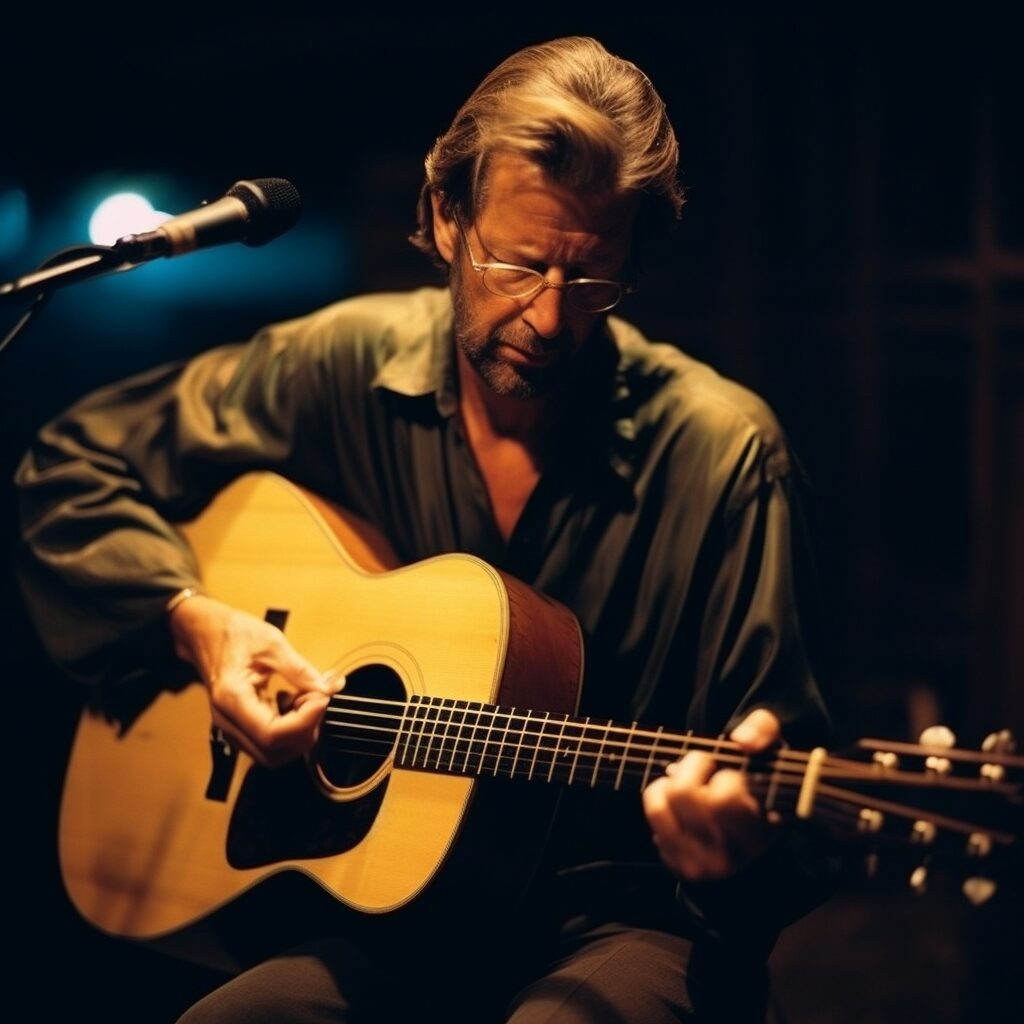 Chart Triumphs of “Signe” by Eric Clapton
Chart Triumphs of “Signe” by Eric Clapton
A Crescendo of Acclaim
“Signe” by Eric Clapton, an instrumental marvel from the critically acclaimed album “Unplugged,” presents a unique case in the realm of chart success. Unlike the conventional tracks that climb the charts through radio plays and digital streams, “Signe” carved its niche through the sheer power of live performance and the album’s overall triumph.
The Unplugged Phenomenon
Eric Clapton’s “Unplugged” album, released in 1992, became a monumental success, earning diamond certification and winning six Grammy Awards, including Album of the Year. “Signe,” as the opening track, set the tone for this acoustic masterpiece. While it may not have charted as a single, its role in the album’s success is undeniable.
Beyond the Charts
Focusing solely on chart positions would not do justice to “Signe’s” impact. It contributed to the album’s overall narrative, showcasing Clapton’s virtuosity and emotional depth. The song, performed with a nylon-stringed acoustic guitar, offered a serene yet profound opening to an album that redefined Clapton’s career.
Exploring the Silent Lyrics of ‘Signe’
An exploration of the instrumental masterpiece ‘Signe,’ delving into the themes and emotions conveyed through Eric Clapton’s expressive guitar work.
 Given that ‘Signe’ by Eric Clapton is an instrumental piece, analyzing its ‘lyrics’ poses a unique challenge. Instead, we can delve into the themes and emotions conveyed through its musical composition, considering aspects such as melody, harmony, and the context in which Clapton composed this piece.
Given that ‘Signe’ by Eric Clapton is an instrumental piece, analyzing its ‘lyrics’ poses a unique challenge. Instead, we can delve into the themes and emotions conveyed through its musical composition, considering aspects such as melody, harmony, and the context in which Clapton composed this piece.
Lyrical Themes and Messages (Without Lyrics)
‘Signe’ is an acoustic instrumental that opens Eric Clapton’s ‘Unplugged’ album, setting a reflective and introspective tone for the entire record. The lack of lyrics invites listeners to interpret the song through their emotional response to its melody and guitar work. The piece can be seen as a tribute to Clapton’s son, Conor, whose tragic death deeply affected the musician. The gentle, flowing guitar lines may reflect Clapton’s personal mourning and his journey towards healing.
Narrative and Storytelling (Through Music)
Though ‘Signe’ lacks lyrics, its narrative is conveyed through the emotive quality of Clapton’s guitar playing. The song’s structure, with its soft introduction, dynamic middle, and tranquil conclusion, could symbolize a journey through grief to a place of peace. This narrative style, relying solely on instrumental expression, allows each listener to craft their own story or emotional journey, making the piece universally relatable.
Use of Musical Devices
In place of literary devices, ‘Signe’ utilizes musical elements like melody, harmony, and rhythm to evoke emotions and tell its story. The song’s main melody is both memorable and poignant, utilizing the acoustic guitar’s timbre to express a wide range of emotions. The interplay between Clapton’s guitar and the accompanying musicians adds layers of depth and complexity, much like a poet uses metaphors and similes to enrich their narrative.
Emotional Impact and Relatability
The emotional impact of ‘Signe’ is profound, offering a space for reflection and introspection. Its serene and melodic nature can evoke feelings of calmness, nostalgia, or even sadness, depending on the listener’s personal experiences and state of mind. This emotional versatility is a testament to Clapton’s skill as a musician and composer, showcasing his ability to connect with audiences on a deeply personal level.
Language and Wordplay (Musical Phrasing and Expression)
While ‘Signe’ may not feature verbal language, the musical phrasing and expression serve a similar purpose. Clapton’s choice of chords, the dynamics of his playing, and the pacing of the piece all contribute to its narrative and emotional expression. The subtlety in Clapton’s fingerpicking and the nuances in tempo and volume speak volumes, proving that music, much like language, can convey complex emotions and stories without a single word being spoken.
Conclusion
In lieu of traditional lyrics analysis, exploring ‘Signe’ through its musical composition and the emotions it evokes offers a rich and rewarding experience. Clapton’s masterpiece stands as a poignant reminder of music’s power to convey stories and emotions in the absence of words, resonating with listeners through its beautiful simplicity and emotional depth.
Unveiling the Structure
“Signe” by Eric Clapton is an acoustic journey through melody, harmony, and rhythm, set in A major with a tempo of 176 bpm. The intricate fingerpicking, chord transitions, and interplay between guitars highlight Clapton’s mastery. This song stands as a unique piece in Clapton’s discography, showcasing his ability to convey emotion through instrumental music.
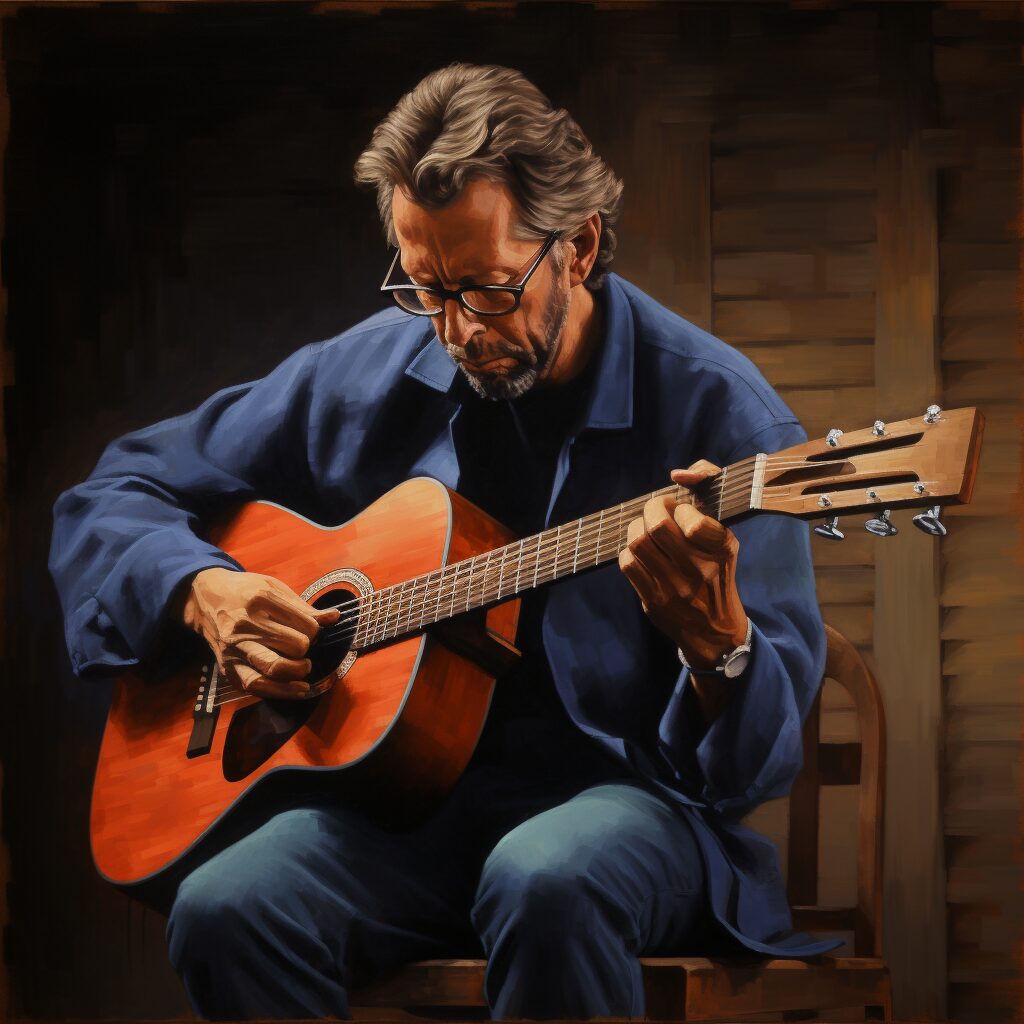 Unveiling the Structure
Unveiling the Structure
“Signe,” an acoustic marvel by Eric Clapton, opens the gates to a serene musical landscape, masterfully constructed with layers of melody, harmony, and rhythm that interlace to form a tapestry of pure emotive expression. This piece, devoid of lyrics, relies on the rich, textured fabric of Clapton’s guitar work to narrate its tale, weaving a complex yet comforting blanket of sound that envelops the listener in warmth and introspection.
Key and Tempo: The Foundation
Set in the luminous key of A major, “Signe” illuminates the spectrum of human emotion, from the depths of contemplation to the peaks of joy. The choice of key provides a bright, clear tonal base from which Clapton draws his melodic and harmonic inspirations. The tempo, marked at a brisk 176 beats per minute, adds an underlying energy to the piece, driving the composition forward with a steady, pulsating rhythm that mirrors the heartbeat of the song’s narrative.
Chordal Weave and Rhythmic Flow
The song structure of “Signe” is an intricate dance of fingerpicked patterns, where the repetition of themes serves not as redundancy but as reinforcement of the song’s core motifs. Clapton’s command over his instrument is evident in the complex syncopation and the seamless transitions between chords, often changing off the beat to add a layer of sophistication and surprise to the listener’s journey through the song. This technique, while challenging to master, plays a pivotal role in crafting the unique rhythmic texture that defines “Signe”.
Instrumental Voices: A Harmonious Ensemble
While Clapton’s acoustic guitar takes center stage, it’s the subtle interplay with fellow guitarist Andy Fairweather Low that adds depth and dimension to “Signe.” Their combined strings act as a duo of voices, engaging in a harmonious dialogue that enhances the song’s narrative power. The use of standard tuning allows for a clear, resonant sound that further enriches the song’s acoustic quality, making each note and chord resonate with clarity and purpose.
A Comparative Glance
In the grand tapestry of Clapton’s discography, “Signe” stands out as a testament to his versatility and ability to convey profound emotion through instrumental music. Unlike his more lyric-driven pieces, this song relies solely on the eloquence of the guitar, inviting listeners to find their own meaning within its notes. It marks a distinctive point in Clapton’s musical journey, showcasing a side of his artistry rooted in the pure, unadorned beauty of acoustic music.
Behind the Strings: The Creative Process
The creation of “Signe” is a peek into Clapton’s artistic soul, revealing a musician deeply connected to his craft. The song, a product of both technical prowess and emotional depth, showcases Clapton’s ability to blend melody and rhythm into a narrative without words. It’s a piece that speaks to the listener’s innermost feelings, inviting them to partake in a musical exploration that transcends the need for verbal expression.
The Architect of Melody
Eric Clapton, a maestro of the guitar, has also etched his name as a profound composer. From the heart-wrenching “Tears in Heaven” to the serene melodies of “Signe,” Clapton’s compositions weave emotional narratives that resonate deeply with listeners, showcasing his unparalleled ability to convey complex emotions through music.
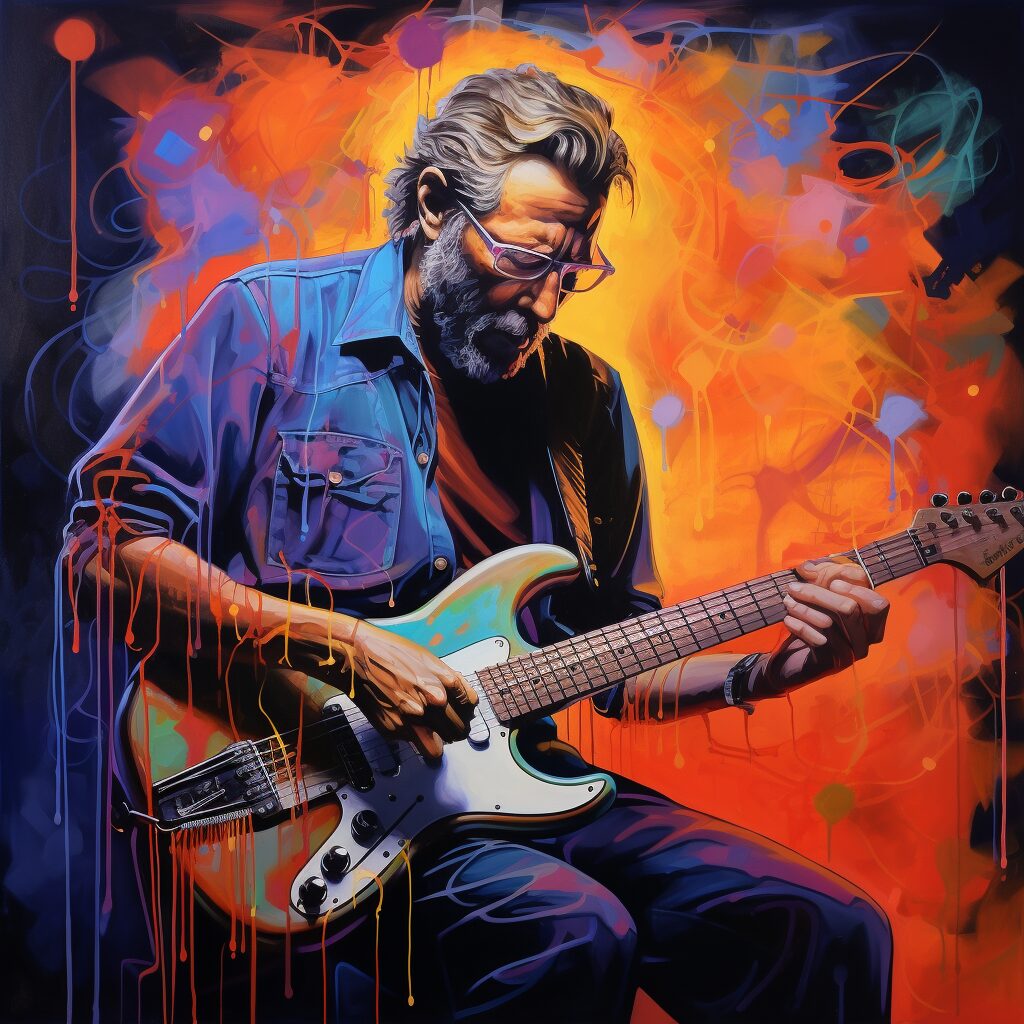 Eric Clapton’s journey as a composer is as legendary as his guitar solos. Born on March 30, 1945, in Ripley, Surrey, England, Clapton transformed the landscape of rock and blues with his profound musicality and emotive compositions. Known as one of the most influential guitarists of all time, his work with bands like Cream and The Yardbirds, and his solo career, underscore his virtuosity not just as a performer but also as a composer whose works like “Layla” and “Tears in Heaven” are etched in the annals of music history.
Eric Clapton’s journey as a composer is as legendary as his guitar solos. Born on March 30, 1945, in Ripley, Surrey, England, Clapton transformed the landscape of rock and blues with his profound musicality and emotive compositions. Known as one of the most influential guitarists of all time, his work with bands like Cream and The Yardbirds, and his solo career, underscore his virtuosity not just as a performer but also as a composer whose works like “Layla” and “Tears in Heaven” are etched in the annals of music history.
Clapton’s musical style is a rich tapestry woven from his blues influences, personal experiences, and the guitar’s expressive potential. His compositions often reflect a deep emotional undercurrent, with “Signe” being no exception. This instrumental piece, from the acclaimed “Unplugged” album, stands out for its eloquence in expressing emotions without words, showcasing Clapton’s ability to tell stories through his guitar.
The creation of “Signe” illustrates Clapton’s compositional process, where personal reflection and musical innovation intertwine. Each note and chord in “Signe” carries a piece of Clapton’s soul, offering listeners a glimpse into his introspective journey. This song, like many of his compositions, invites audiences to explore their own emotions, highlighting the universal language of music that Clapton so masterfully speaks.
Dive into the serene world of Eric Clapton’s Signe ?. A testament to his acoustic mastery, this track from the iconic ‘Unplugged’ album invites us on a journey of profound emotion and intricate musical narratives, all without uttering a single word. #EricClapton #Unplugged #Signe #MusicMagic ✨? https://bit.ly/3Ya1Dy5

